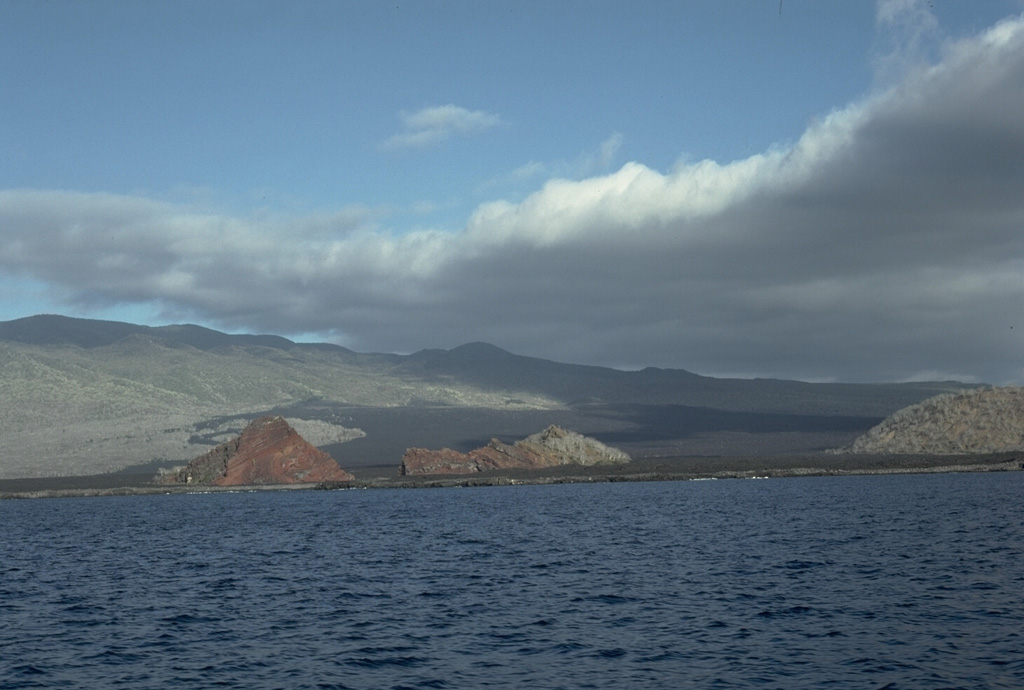Global Volcanism Program | Image GVP-04749

The elongated shield volcano of Santiago Island is dotted with Holocene pyroclastic cones. Fresh lava flows that blanket the flanks of the volcano originated from these cones. The 920-m-high summit ridge, lined with NW-trending cinder and spatter cones, is seen here from James Bay on the west side of the island. The James Bay lava flows (center) reached the coast along a broad front. They were dated by fragments of marmalade pots left by buccaneers in 1684 that were subsequently embedded in the lava flows observed by Charles Darwin in 1835.
Photo by Lee Siebert, 1978 (Smithsonian Institution).
![]() This image is made available under the Public Domain Dedication CC0 license, but proper attribution is appreciated.
This image is made available under the Public Domain Dedication CC0 license, but proper attribution is appreciated.

Santiago
